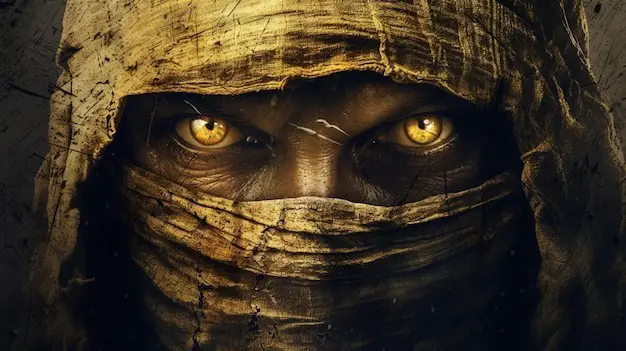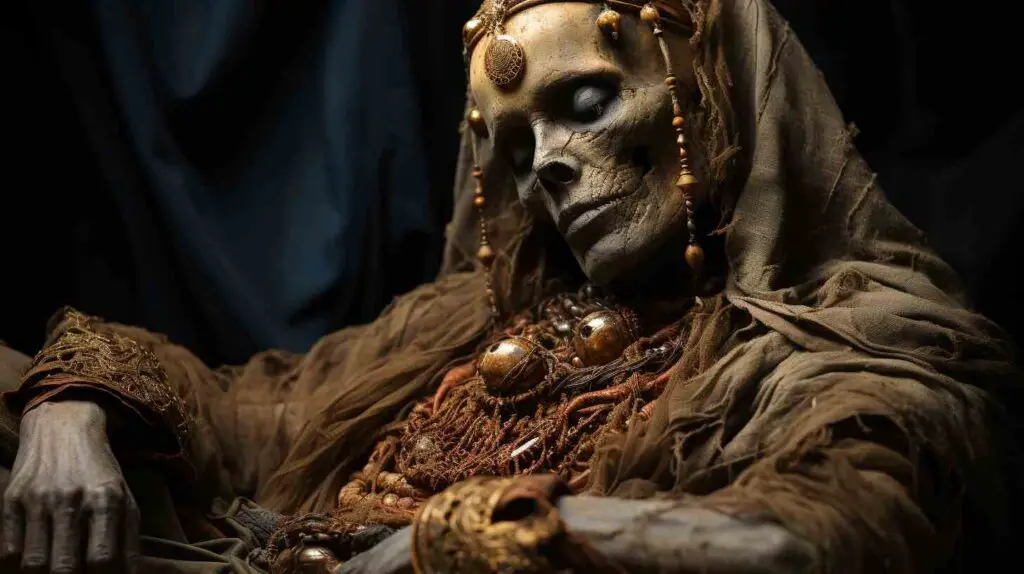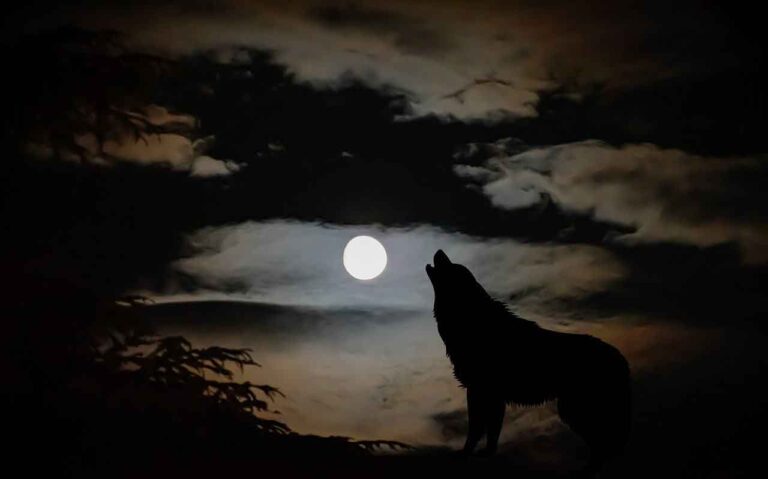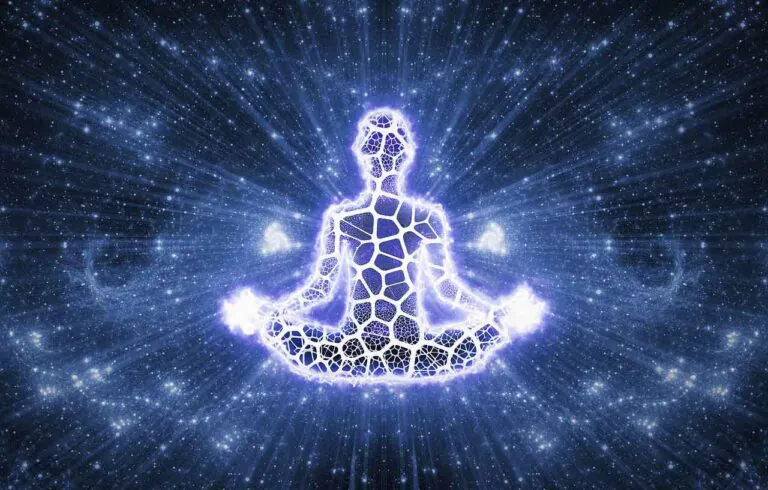
In ancient history, a great practice emerged that went beyond the mere preservation of lifeless bodies. Mummification, an art woven into the fabric of civilizations like ancient Egypt, carried a spiritual depth that transcended the boundaries of life and death.
Mummification served as a bridge between earthly existence and the spiritual realms, ensuring the soul’s safe passage and a chance for eternal life in the afterlife. It symbolized the belief in the continuity of the soul and the pursuit of spiritual harmony and balance in the universe. This article is a spiritual journey through time, where we will uncover the mystical beliefs and spiritual meanings that underpinned the practice of mummification.
| Key Points | Details |
|---|---|
| Bridge to the Afterlife | Ensured the soul’s safe passage to the afterlife and eternal existence. |
| Protection and Guidance | Priests invoked blessings and included symbols of gods and goddesses for guidance. |
| Spiritual Balance (Ma’at) | “Ma’at” represented truth, balance, and cosmic harmony; heart preservation ensured purity. |
| Resurrection and Regeneration | Symbolized transformation and the potential for new life beyond death. |
| Connection with Deities | Anubis guided the deceased through mummification, and Osiris welcomed them to the realm of the dead. |
The Ancient Egyptians and Their Quest for Immortality
The Heart Weighing Ceremony: A Soul’s Balance
The ancient Egyptians possessed a deep belief in the afterlife, where one’s heart was deemed the key to eternal existence. Let’s delve into their unique heart-weighing ceremony and the spiritual concept of ma’at – the balance of the soul.
The heart-weighing ceremony transcended the physical realm; it was a spiritual audit. The heart, symbolizing one’s deeds and intentions, was weighed against the feather of ma’at, representing truth and cosmic harmony. A pure heart ensured a confident continuation of the soul’s spiritual voyage, free from the shackles of earthly impurities.
Preservation of the Physical Form: The Ka and Ba
The terms Ka and Ba may sound intriguing, but they signify spiritual facets preserved through mummification. Discover how this ancient practice intricately safeguards the soul.
The Ka, the essence of life force, sought refuge in a physical vessel to navigate the afterlife. The Ba, representing personality and individuality, required protection. Mummification served as the spiritual conduit that ensured these components remained intact, guiding the soul on its celestial journey.
The Role of Anubis and Osiris: Guardians of the Dead
Anubis and Osiris, revered deities in the ancient Egyptian pantheon, played pivotal roles in mummification. Learn how these divine beings served as guardians, facilitating the soul’s transition to the afterlife.
Anubis, depicted with a jackal’s head, was the overseer of the mummification process. His presence wasn’t mere symbolism; it offered spiritual guidance, ensuring the rituals unfolded with reverence. Osiris, the god presiding over the afterlife, extended a comforting embrace to departing souls. Their spiritual presence reassured the living and the departed alike.
The Mesmerizing Art of Mummification
The Mummification Process Unveiled
What transpired during a mummification ritual? Let’s delve into the profound spiritual significance of each step, from body purification to linen wrapping, preserving the sanctity of the soul’s journey.
Mummification was more than preserving the physical; it was a sacred passage. Body cleansing purified the soul, priming it for the celestial realms. The removal and preservation of organs bore spiritual importance, with each organ representing an aspect of the soul. The natron drying process symbolized the spiritual transition from the temporal to the eternal. Lastly, the linen wrapping served as a cocoon of spiritual protection, ensuring the soul’s safe passage.
Canopic Jars: Guardians of Organs
Ever wondered about the fate of the organs? Enter the mystical Canopic jars – protectors of vital organs, ensuring the completeness of the soul in the afterlife.
These Canopic jars transcended their physical forms; they were spiritual safeguards. Each jar cradled a vital organ, and each organ comprised a facet of the soul’s puzzle. The divine figures adorning these jars watched over these precious components, ensuring their integrity for the soul’s celestial journey.
Beyond Egypt: Mummification in Other Cultures
Mummies of Peru: The Chinchorro
Mummification was not exclusive to Egypt. Explore the Chinchorro people of Peru and their unique approach to preserving the deceased.
Across the globe, the Chinchorro people, long before the Egyptians, practiced mummification. They transformed their loved ones into astonishingly lifelike mummies, employing techniques ranging from natural drying to applying a black paste on the skin. Their methods offered a fascinating contrast to Egyptian practices, reflecting the diverse spiritual meanings attached to mummification.
China’s Immortal Guardians: The Terracotta Army
China’s Terracotta Army isn’t just an archaeological marvel; it signifies a profound belief in the afterlife. Delve into how this vast army was meant to accompany Emperor Qin Shi Huang into eternity.
China, steeped in history, approached mummification differently. Instead of preserving individuals, they safeguarded an entire army. The Terracotta Army, with its thousands of life-sized soldiers, horses, and chariots, served as guardians, protecting Emperor Qin Shi Huang in the afterlife. It stands as a testament to their belief in a grand and eternal existence beyond the physical world.

The Spiritual Meaning of Mummification
The main spiritual meaning of mummification, particularly in the context of ancient Egypt, is closely tied to the belief in the afterlife and the preservation of the soul’s journey beyond death. Here are the key spiritual aspects:
Eternal Life and the Afterlife
Ancient Egyptians believed in an afterlife where the soul continued its existence. Mummification was a way to ensure the deceased had a well-preserved body to inhabit in the afterlife, as they believed that the soul needed a physical form to carry on its journey.
Protection and Guidance
Mummification was seen as a means to protect the deceased in the afterlife. The process of mummification involved rituals and ceremonies overseen by priests who would invoke blessings and protection for the deceased. Symbols of gods and goddesses were often included in the burial tombs to guide and aid the soul in its journey.
Ma’at and Spiritual Balance
Central to the belief in the afterlife was the concept of “ma’at,” which represented truth, balance, and cosmic harmony. In the afterlife, the soul’s heart would be weighed against the feather of ma’at. If the heart was pure and free from sin, the soul could continue its journey. Mummification aimed to preserve and free the deceased’s heart from impurities.
Resurrection and Regeneration
Mummification was viewed as a process of transformation and regeneration. Just as Osiris, the god of the afterlife, was reborn, the deceased hoped for a similar resurrection. The preserved body symbolized the potential for new life and continuity beyond death.
Connection with Deities
Mummification rituals often involved the invocation of deities like Anubis and Osiris. Anubis, the god of embalming, guided the deceased through the mummification process. Osiris, the god of the afterlife, welcomed the deceased to the realm of the dead. These deities played vital roles in the spiritual journey of the deceased.
Symbolism of Mummies in Dreams
Dreams have always been a source of fascination and intrigue, offering a glimpse into the depths of our subconscious minds. Among the myriad symbols that can manifest in our dreams, mummies stand out as enigmatic and preserved figures that often leave us pondering their significance. In this comprehensive guide, we embark on a journey through the realm of mummy dream interpretation, aiming to unveil the spiritual and psychological meanings concealed within these ancient, bandaged enigmas.
Understanding the Symbolism of Preservation
When we encounter mummies in dreams, the symbolism often relates to our inherent desire to preserve certain aspects of our lives. This preservation can be tied to our memories, past experiences, or even our attempts to protect cherished moments.
Mummies as Spiritual Messengers
Guardians of Ancient Wisdom
In some dream scenarios, mummies may emerge as guardians of ancient wisdom. These dreams could signify a call to tap into our inner wisdom or seek knowledge from the past. It’s as if these preserved figures act as guides, encouraging us to explore the depths of our consciousness.
The Journey to the Afterlife
Mummies, associated with the process of preserving the deceased, can also symbolize the soul’s journey to the afterlife. Such dreams may reflect our subconscious thoughts about mortality, transcendence, and the spiritual dimensions of life. They prompt us to contemplate the mysteries of existence.
Types of Mummy Dreams
Dreams of Unwrapping Mummies
Dreams in which we unwrap mummies may symbolize our desire to unearth hidden truths or let go of emotional baggage. It’s as if we’re unraveling the layers of our own past, seeking clarity and release.
Being a Mummy in a Dream
Becoming a mummy in a dream can convey feelings of confinement or restriction in waking life. This symbolism often reflects a sense of being bound or constrained in some aspect of our daily existence.
Mummies Coming to Life
Dreams where mummies come to life suggest a reawakening of old memories or emotions that need acknowledgment and resolution. It’s a powerful symbol of inner transformation and the potential for personal growth.

Common Mummy Dream Scenarios
Chasing Mummies in Dream
Dreams of chasing mummies may signify a pursuit of unresolved issues or the quest for elusive answers. These dreams often reflect a strong drive to confront and resolve lingering concerns.
Conversations with Mummies in Dream
When we converse with mummies in dreams, it can indicate a need for introspection and guidance from our inner wisdom. These dream interactions encourage us to seek solutions from within.
Mummies in Different Settings
The settings where mummies appear in dreams, whether ancient tombs or modern landscapes, influence the dream’s message. Ancient tombs may symbolize the past, while contemporary settings may represent our current circumstances. Understanding the setting helps decipher the dream’s context.
Mummy Dreams and Your Personal Journey
Understanding Personal Context
Interpreting mummy dreams involves considering personal experiences and emotions. Your unique context shapes the interpretation of these symbols. Reflecting on how these dreams align with your life can provide valuable insights.
Embracing the Messages
Ultimately, embracing the messages conveyed by mummy dreams involves acknowledging their significance. Whether they offer guidance, encourage self-reflection, or signal the need for emotional release, these dreams invite us to explore the depths of our subconscious and embrace personal growth.
Conclusion
The mysterious practice of mummification, which involved layers of cloth, went beyond simple physical preservation. It was a profound spiritual journey, an odyssey of the soul from earthly existence to the celestial unknown. As we unravel the spiritual meaning behind this ancient practice, we find ourselves contemplating the eternal question: What lies beyond the threshold of life and death?
Remember, when mummies are mentioned, it’s not merely about the bandages; it’s about the profound journey of the soul. Join us on this spiritual quest through the corridors of history as we decipher the enigmatic, the ancient, and the spiritually profound world of mummification.






